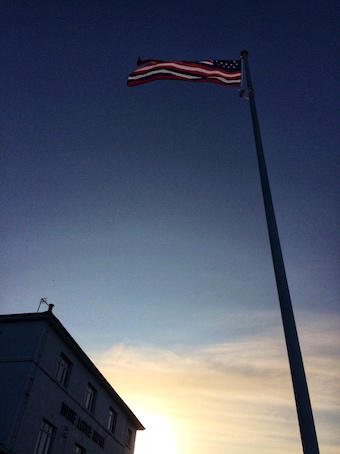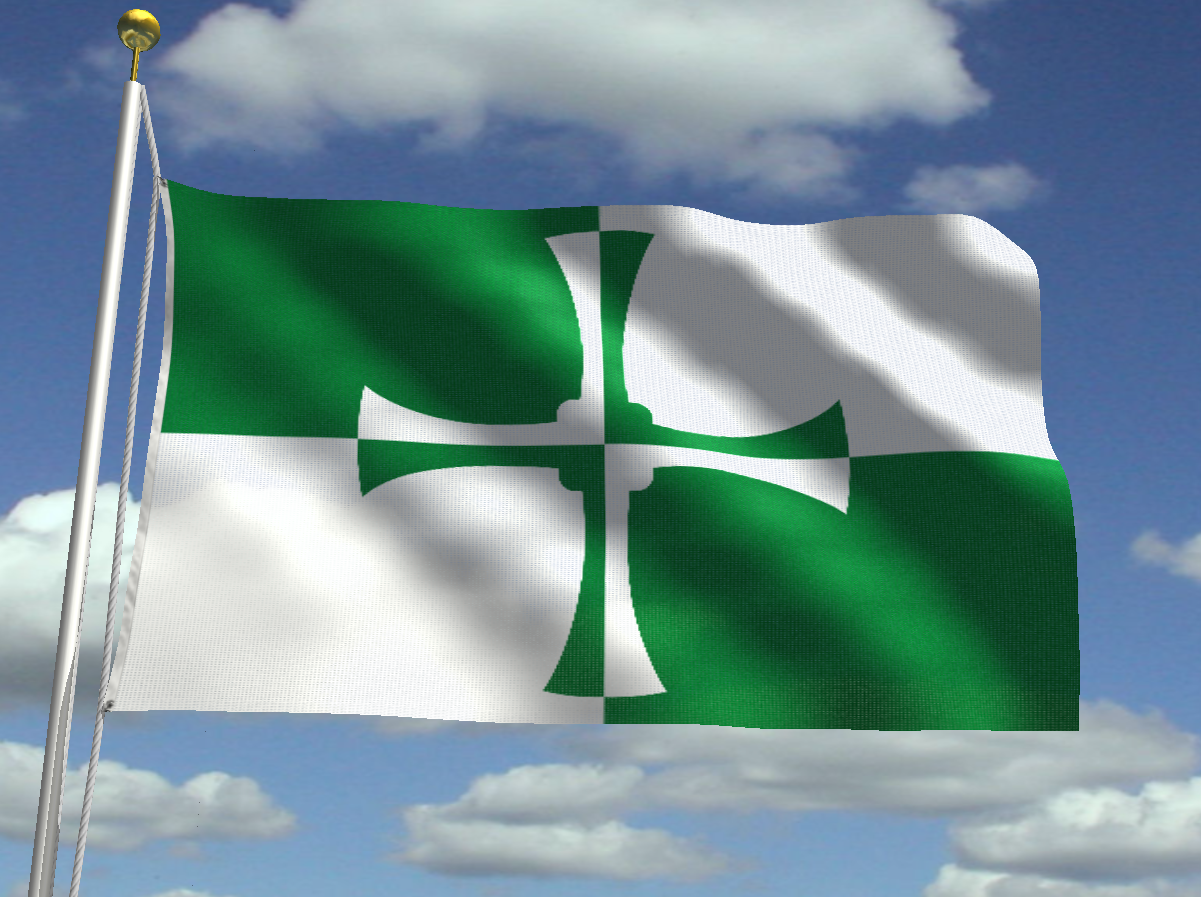Jun-2021
A John Paul Jones Trail from South West Scotland to Filey
During September last year a curious flag was flown from the flagpole of the White Lodge Hotel. It proved to be a huge talking point among locals and visitors alike. The hotel staff found themselves being bombarded with questions as to what the flag represented.
The flag in question was the so-called Serapis flag. Fashioned by American sailors after the Battle of Flamborough Head in 1779, when the captured HMS Serapis was sailed into the neutral Dutch port of Texel. The British ambassador claimed that American Captain John Paul Jones was little more than a pirate, so to avoid arrest the crew made the ‘Serapis’ flag and flew it from the mast. The Dutch recognised the flag and it passed into American folklore as one of the first flags of the US Navy.

The Serapis flag flying at The White Lodge Hotel.
This year a series of events are being planned to mark the anniversary of the Battle of Flambrough Head in September, but meanwhile, in July another flag will be flown from the flagpole of the White Lodge Hotel, that of the Scottish County of Kirkcudbrightshire. It is a nod to the birthplace of the ‘American’ Captain John Paul Jones. He was in fact Scottish and was born at Kirkbean in Kirkcudbrightshire.

Kirkcudbrightshire flag
In Kirkbean there is a John Paul Jones Birthplace Museum which attracts many visitors from across the Atlantic. The flying of the Kirkcudbrightshire flag in July is the first step in establishing formal links between Filey and the John Paul Jones Birthplace Museum. In the longer term there are plans to develop a John Paul Jones Trail across South West Scotland and Northern England. It would include Kirkbean, the birthplace of John Paul Jones, the town of Whitehaven in Cumbria where Jones made an unsuccessful raid on the harbour and Filey, which overlooks the site of Jones’s famous engagement at the Battle of Flamborough Head that ended when his ship, the Bonhomme Richard, slipped beneath the waves of Filey Bay.
Happily, the Kirkcudbrightshire flag also has a symbolism that taps into the deep history of both Kirkbean and Filey, as the flag includes the cross of St Cuthbert. The Saint’s body rested at Kirkcudbright for seven years after it was removed from Lindisfarne during the Viking Raids of the 990s. Both Kirkcudbright and Filey were then part of the Dark Age Kingdom of Northumbria that predated the establishment of England and Scotland.
The commemoration of the Battle of Flamborough Head is being driven by a group that will ultimately operate under the brand Filey Bay 1779. It is overwhelmingly based in Filey, but it is working in tandem with individuals, groups and museums on both sides of the Atlantic. Aims include an annual festival every September, the establishment of the maritime visitor centre, raising the profile of Filey for international and domestic visitors and build towards a naval spectacular in Filey Bay on the 250th anniversary of the battle in 2029.
The purchase of the Kirkcudbrightshire flag is being met by Filey Bay Today. The directors of Filey Bay 1779 would like to thank Natalie and Sue Bosomworth for their generosity and also Bill Rusling at the White Lodge Hotel for permission to use the hotel’s flagpole. A great example of Filey pulling together to further the interests of the town.

comment this post